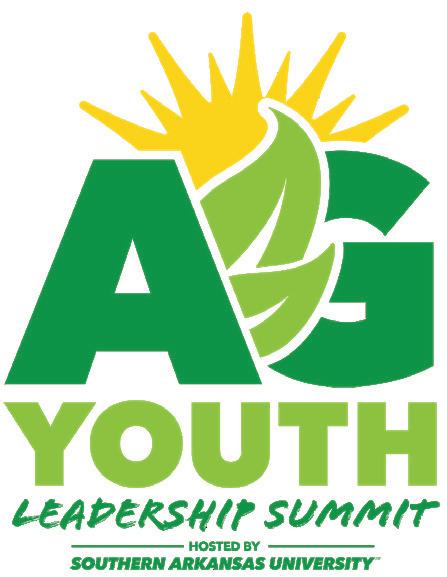Farm Bureau Press

A r FB FOUNDATION GRANT APPLICATIONS OPEN
The Arkansas Farm Bureau Foundation (ArFB Foundation) is dedicated to investing in programs that further educate Arkansans about agricultural and rural issues, and to support and enhance the agricultural and rural communities of our great state.
If your county Farm Bureau is currently looking to create a new agricultural educational project/activity or enhance an existing one, the ArFB Foundation may be able to help. The ArFB Foundation has grants available for agricultural and rural education and research projects. Project examples include agricultural education in your local schools, educational involvement with local FFA members or 4-H members, informing the public about the importance of agriculture in your county and/or Arkansas.
Nonprofits or tax-exempt entities are eligible to apply for ArFB Foundation grants. All grant requests must align with the mission of the ArFB Foundation in order to be considered.
A copy of the 2024 ArFB Foundation Grant Guidelines has been emailed to county presidents but can also be found online. The application deadline is Aug. 30.
For more information, contact Amanda Williams at 501-228-1493 or amanda. williams@arfb.com.



A PEEK INSIDE



FEBRUARY 23, 2024 | VOLUME 27 | ISSUE 4 A PUBLICATION OF THE ARKANSAS FARM BUREAU FEDERATION
Farm
Ag Youth Leadership
Page 3
Arkansas
Bureau 2024
Summit,
New Census Shows Alarming Loss of Family Farms, Page 2
Scan the QR code to access direct links referenced in each article. GET THE LINKS FOLLOW US ONLINE
Previous ArFB Foundation grant recipient projects.

NEW CENSUS SHOWS ALARMING LOSS OF FAMILY FARMS
The newest agriculture census data released by USDA is cause for concern as the number of farms operating in the United States and the number of farm acres have both fallen significantly. The 2022 Census of Agriculture reports 141,733 fewer farms in 2022 than in 2017. The number of farm acres fell to 880,100,848, a loss of more than 20 million acres from just five years earlier.



“The latest census numbers put in black and white the warnings our members have been expressing for years,” said AFBF President Zippy Duvall. “Increased regulations, rising supply costs, lack of available labor and weather disasters have all squeezed farmers to the point that many of them find it impossible to remain economically sustainable."
“Family farms not only help drive the economy, they allow the rest of the nation the freedom to pursue their dreams without worrying about whether there will be enough food in their pantries. We urge Congress to heed the warning signs of these latest numbers. Passing a new farm bill that addresses these challenges is the best way to help create an environment that attracts new farmers and enables families to pass their farms to the next generation.”
While it’s encouraging that the number of beginning farmers increased, the latest census numbers show the number of farmers over the age of 65 is outpacing younger farmers. Almost 1.3 million farmers are now at or beyond retirement age, while just 300,000 farmers are under the age of 35. AFBF has long-established policies supporting beginning farmers, including through farm bill programs focused on new and beginning farmers.
Read the full 2022 Census of Agriculture here.

2 A PUBLICATION OF THE ARKANSAS FARM BUREAU FEDERATION
Farm Bureau Week Donation Collection | As part of Farm Bureau Week, Union County Farm Bureau staff and agents collected items for local Goodwill stores.
Farm Bureau Week Food Drive | Van Buren Co. Farm Bureau partnered with the Christian Training Center and Goode’s Cash Saver to collect donations for their food drive during Farm Bureau Week. The donations will be distributed to the different food pantries across the county.
Farm Bureau Week | Benton Co. Farm Bureau President Wes Evans, Women’s Leadership Committee Chair Lindsi Miles and board member Kevin Smith kicked off Farm Bureau Week by doing a live talk show at KURM promoting Farm Bureau membership and programs.
ARKANSAS FARM BUREAU 2024 AG YOUTH LEADERSHIP SUMMIT
The Arkansas Youth Leadership Summit (AYLS) is returning with a new name and a new location. The four-day seminar will provide an in-depth look at agriculture degrees and careers, introduce students to Arkansas Farm Bureau Federation and examine the issues affecting agriculture and rural Arkansas. All this and more will happen at the Southern Arkansas University (SAU) campus June 2–5!


AYLS allows youth to learn about several aspects of the agricultural industry, including agriculture agencies, companies and technologies. The summit will explore career opportunities in agriculture and the educational path needed for those careers. In addition, the group will tour the SAU campus and farm, experience dorm life, and interact with a local producer and their operation. We will also give back to the community with a service project. The summit will conclude on Wednesday with a dinner for attendees and their families and a drawing for a $500 scholarship for one lucky participant!
AYLS is limited to 20 high school students entering the 11th or 12th grades in the 2024-25 school year. A graded application system will be used to select the participants. Links to the guidelines and application for AYLS can be found here or on the Leader Portal.
The deadline for applications is April 1. Application acceptance is determined by recommendations from a county Farm Bureau executive officer.
We look forward to a successful summit and would appreciate your assistance in recruiting students in your community.
For questions, please contact Donete Spann at 501-2281222 or donette.spann@arfb.com
WHITE CO. YOUNG FARMERS TAKES HOME NATIONAL OUTSTANDING AWARD
Brandon and Lauren Martin of Judsonia were recently selected for the Outstanding Farmers of America (OFA) award. The Martins are poultry and cattle farmers in White County and were named the 2022 Arkansas Farm Bureau Young Farmers & Ranchers Achievement Award winners.

Each year, the OFA accepts nominations for National Outstanding Young Farmers. Ten finalists are honored at the annual NOYF Awards Congress held in a different region of the United States each year. Four national winners are selected, and all past nominees are inducted into the Outstanding Farmers of America. The Outstanding Farmers of America is comprised of past nominees of the Outstanding Young Farmer Program. The group is designed to facilitate an exchange of ideas and friendship that encourages excellence and involvement in agriculture and the local, state, and national community.
ArFB SEEKING 2024 SUMMER INTERNS
The ArFB internship program provides a “hands on” work experience to students who will increase their understanding and knowledge of agriculture and the function/purpose of ArFB. The multidepartment internship includes opportunities to interact with agriculture leaders and farmers from across the state/country. Students will be tasked with the development of new advocacy material to promote Farm Bureau policy to legislators, regulatory agencies, consumers and/or students.
The Public Relations internship provides technical and creative support for ArFB’s PR department, while gaining valuable experience in support of Arkansas’ largest member organization. Students will be tasked with writing for our various publications, photography, videography, design and more. More information is available online
3 A PUBLICATION OF THE ARKANSAS FARM BUREAU FEDERATION
MARKET NEWS
as of February 21, 2024
Contact
Brandy Carroll brandy.carroll@arfb.com
Tyler Oxner tyler.oxner@arfb.com
Corn
At the beginning of the week, prices showed early strength, largely due to news of EPA administrator Micheal Regan's expects participation alongside USDA Ag Secretary Vilsack at the Commodity Classic in Houston on March 1. This coincides with the EPA's scheduled update on measuring carbon intensity for U.S. biofuels. However, prices took a downward turn on Wednesday morning due to a short-covering spree and expectations of ample supplies in both the U.S. and South America. Futures remain oversold, with managed funds approaching record short positions in corn futures. The March 2024 contract hit a new low this week, with cash U.S. corn prices nearing or falling below farmer breakeven levels. U.S. corn exports have surged by 32% compared to last year, exceeding the USDA's estimate of 23%. In Brazil, the first corn crop harvest has reached 29% as of last Friday, while second crop plantings have soared to 59%, marking a 21% increase for the week and well surpassing the 40% pace from a year ago.
Soybeans
The March contract price opened the week with a gap higher, only to close the gap shortly after. The market appears eager for bushels sooner rather than later, judging by the price spread between nearby months and new crop prices. Although March contract prices recently hit an eightmonth low, they rebounded slightly from the initial gap higher. Nearby support is at $11.60, while resistance now sits at last week’s $11.83. Early week rumors from Tuesday suggested
China’s return from the Lunar New Year holiday, with reports of buying 10 to 12 cargoes of soybeans from Brazil. U.S. soy demand remains sluggish and following last month’s 35-millionbushel reduction in U.S. soy export sales by the USDA, traders anticipate another downward adjustment. Funds maintain a bearish position on soybeans, reaching a record high as of last Tuesday, while weather conditions in South America remain mostly neutral to bearish.
Wheat
On Tuesday, the March 2024 contract demonstrated impressive gains until encountering resistance at $5.85, with the next resistance level situated at the 100-day moving average at $6.01. This strength seemed to stem from a technical perspective, as the market was severely oversold and lacked significant news catalysts. Despite sluggish export demand for U.S. wheat, both Chicago and Kansas City are indicating inverted March-May calendar spreads, typically considered a bullish sign. Much of the U.S. Midwest is forecasted to experience warmer-than-normal conditions, with rains this week favoring the eastern corn belt. Russia and Ukraine remain the primary contributors to driving prices lower due to ample supplies. A consultant informed Reuters that the world appears to be gradually transitioning back to a period of higher inventories.
Rice
Old crop rice futures are showing technical signs that a top has been charted. On Feb. 12, both the March and May contracts set new highs before turning lower and charting a bearish key reversal. Follow through selling was limited last week but has since accelerated. March has violated uptrending support, but could find additional support between $17.00 and $17.50. New crop futures, on the other hand, have sold off significantly in the past two weeks, taking over a dollar off the market in the process. Farmers should carefully consider SCO and ECO crop insurance
coverage this year. The RMA projected price of $15.50/cwt could provide significant price protection for rice farmers. Export demand has been supporting old crop futures. World prices remain strong, due in part to India’s export ban. Last week’s sales of 154,900 metric tons was bolstered by the recent Col-Rice TRQ auction to Colombia, which accounted for 88,000 metric tons of the total. The first outlook for the 24-25 marketing year, however, paints a more bearish picture for the future. Planted acres are expected to hold steady at 2.9 million, but ending stocks are forecast to increase 4 million cwt to 46.5 million cwt.
Cotton
After a nearly two-month rally, cotton futures have stumbled, gapping sharply lower on Tuesday, the first trading day after both USDA and the National Cotton Council released their first look at the 2024 crop. The NCC survey showed planted intentions of 9.8 million acres, down 3.7% from 2023, while Arkansas farmers reported intentions to plant 7% fewer acres in cotton. However, the survey was open in December and January, and cotton prices continued to trend sharply higher while grain prices moved lower. At the annual Ag Outlook Forum, USDA pegged cotton acres at 11 million. That estimate is not survey based, but traders seemed to put a lot more stock in the USDA number than in the NCC survey.
Cattle
Cattle futures have been under pressure from negative packer margins and weaker cash markets. Underlying support continues to come from reduced cattle supplies. Technically, April futures continue to trend higher, and have found support at $180 in the recent downturn.
4 A PUBLICATION OF THE ARKANSAS FARM BUREAU FEDERATION
ashley.wallace@arfb.com
EDITOR Ashley Wallace















